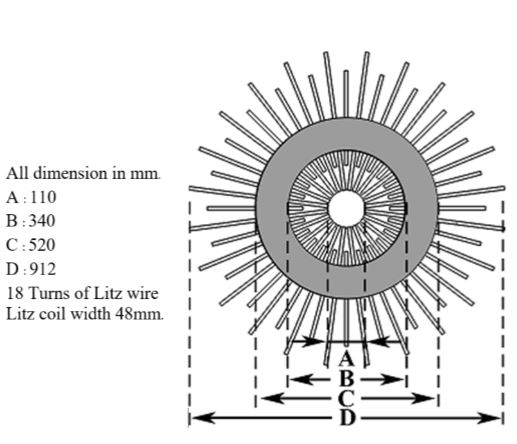The Analysis of LCL Resonant Inverter for Inductive Power Transfer Application
Main Article Content
Abstract
Inductive power transfer (IPT) systems use the principle of magnetic coupling to transfer power through the air gap. A wireless battery charger is used as a case study. The resonant inverter is used to generate the high frequency current transmitting through the power pad. The basic topologies give the large inverter current with the large conduction loss. This paper proposes the LCL resonant voltage source inverter using low power device rating. The proposed IPT system has two operating points with different powers required. The ZVS operation region and two operating points are validated by the AC sweep of actual load and the frequency response of entire system. Finally, the experimental results at two operating points with the efficiency comparisons are included to verify the proposed system.
Article Details
References
A. Khaligh and S. Duzmez, Comprehensive Topology Analysis of Conductive and Inductive Charging Solutions for Plug-In Electric Vehicles," IEEE Transaction on Vehicular Technology, vol. 61, no. 8, pp. 3475-3489, October 2012.
J. T. Boys, G. A. Covic, and A. W. Green, Stability and control of inductively coupled power transfer systems," IEEE Proceedings of Electric Power Applications, vol. 147, pp. 37-43, January, 2000.
G. A. Covic, J. T. Boy, A. M. W. Tam and J.C.-H. Peng, Self Tuning Pick-ups for Inductive Power Transfer," Power Electronics Specialists Conference (PESC), pp. 3489-3494, 2008.
H. Movagharnejad and A. Mertens, Design optimization of various contactless power trans-
former topologies for wireless charging of electric vehicles," Power Electronics and Applications (EPE'16 ECCE Europe), September 2016.
M. Budhia, G. A. Covic, and J. T. Boy, Design and optimization of circular magnetic structures for lumped inductive power transfer system," IEEE Transaction on Power Electronic, vol. 26, no. 11, pp. 3096-3108, 2011.
C.-S.Wang, O. H. Stielau, and G. A. Covic, Design considerations for a contactless electric vehicle battery charger," IEEE Transaction on Industrial Electronic.,vol. 52, no. 5, pp. 1308-1314, October 2005.
Hunter H. Wu, A. Gilchrist, K. D. Sealy and D. Bronson, A High Efficience 5 kW Inductive Charger for EVs Using Dual Side Control," IEEE Transaction on Industrial Informatics, vol. 8, no. 3, pp. 585-595, August 2012.
J. Zhou, F. Wu, R. Zhang and X. Dai, Design and analysis of the LCL resonant converter in inductive Power Transfer system," Electronics and Application Conference and Explosion (PEAC), pp. 1271-1276, November 2014.
S. Chudjuarjeen, A. Sangswang, and C. Koompai, An Improved LLC Resonant Inverter for Induction Heating Applications with Asymetrical Voltage-Cancellation Control," IEEE Transaction on Industrial Electronics, vol. 58, no. 7, pp. 2915-2925, July 2011.


